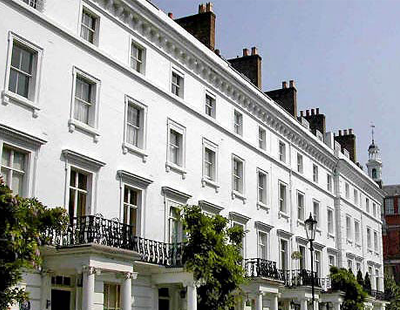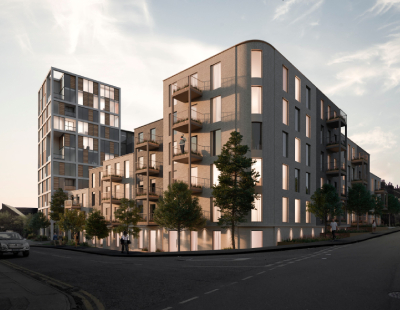
Houses in London’s commuter belt will be the hardest hit in the event of a no-deal Brexit, according to property investment platform British Pearl.
Areas like Stevenage, Watford and Hastings will experience the full brunt of the no-deal ‘sledgehammer’, largely because the price gap between flats and houses is widening the fastest in Britain.
For example, the company found that the average detached house in Stevenage was 197% more than the average flat (£553,697 vs £186,422) – the fifth largest gap anywhere in the UK and up by 68.2% in the last five years.
These two measures make the Hertfordshire town the most polarised property market in Britain, followed by Watford, Hertfordshire, and Hastings, East Sussex.
The price gap between flats and houses in Watford has grown 53.2% to 201.4%, while Hastings has seen the gap widen from 63% to 184.7%.
The report comes after Bank of England Governor Mark Carney warned a ‘chaotic’ withdrawal from the EU could cause house prices to crash as much as 33% in a worst-case scenario and send a ‘financial shockwave’ through the economy.
The chances of rapid house price declines in Britain varies considerably between areas. By using the two measures to rank the UK’s towns and cities, British Pearl identified where investors and buyers would be more likely to see market cooling result in prices falling back down more rapidly.
The findings serve as a warning to landlords, homeowners, first-time buyers and property investors who may place big bets on markets where the gaps between different steps on the housing ladder have grown most dramatically ahead of Brexit.
Currently, the average difference in price across the UK stands at 50.6% and has grown 24.2% in the past five years.
At the other end of the spectrum, the average detached house in Doncaster was 140.6% more than the average flat, while the gap between prices over the last five years has increased by just 18.4%.
Stoke-on-Trent followed closely behind, with a price gap of 131.2% that had grown just 26.9% over the same period, and Blackpool where prices were 153.9% apart after widening 12.3% in five years.
“Parts of the UK property market have made considerable gains and, the relative value of homes in different price bands now poses a serious risk to homeowners and investors in the run-up to March 2019,” James Newbery, investment manager at British Pearl, commented.
“However, the study also shows being diligent about the area you buy in can help you avoid these increased risks, with huge variations being seen in this polarisation measure across the country.”










.png)









Join the conversation
Be the first to comment (please use the comment box below)
Please login to comment